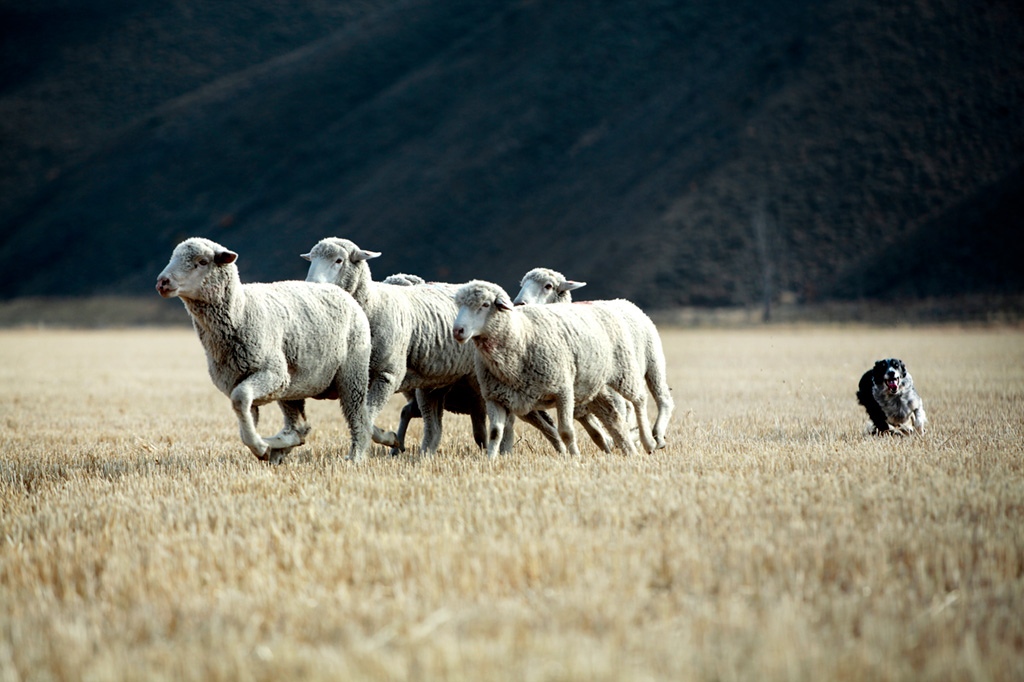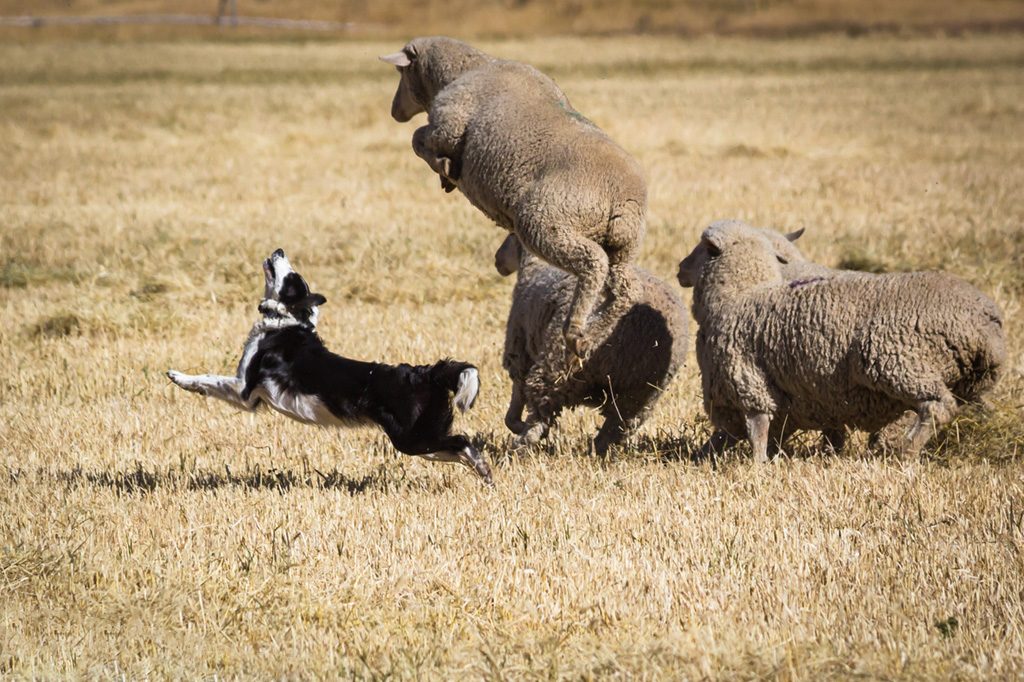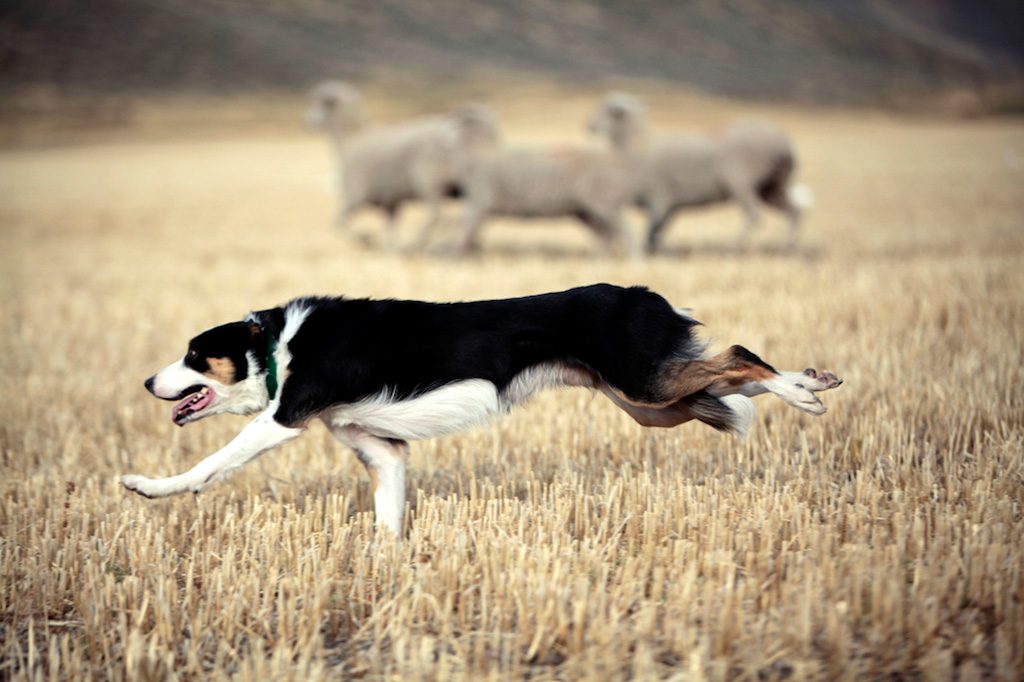Idaho folklore suggests that, in the 1860s, John Hailey herded the first flock of sheep through the Wood River Valley. The namesake of Blaine County’s most populous town was a pioneer in an industry that largely would come to define the region three quarters of a century before Sun Valley came to be recognized as America’s first destination ski resort and the advent of the chairlift on Ruud and Proctor mountains.
At that time, Idaho’s sheep population numbered approximately 14,000 rams, ewes and lambs. By 1890, that number had grown to over 600,000; by 1918, well over 2.5 million sheep roamed the valleys and mountains of Idaho, nearly six times the human population of the burgeoning state. In fact, it was not until the 1970 U.S. Census that the human population finally outnumbered sheep in Idaho due to a significant decline in the sheep ranching industry.
As many non-native Idahoans relocated to the Wood River Valley in the latter part of the 20th century, conflicts between local flocks and recreationists increased. Local sheepherding families such as the Peaveys and Laidlaws realized that such conflicts threatened the industry that had been their family’s lifeblood for generations. In an effort to educate the evolving community about the historical, cultural, and economic importance of sheep ranching, the Trailing of the Sheep Festival was born.
Twenty-three years later, from Oct. 9 – 13, thousands of visitors and locals alike will enjoy a multifaceted celebration that features the Trailing of the Sheep parade through downtown Ketchum, culinary exhibitions, the annual Wool Fest, a sheepherders Q and A, the Sheep Tales storytelling gathering, and, one of the highlights of the festival, the Sheepdog Trials.
In this nationally sanctioned event, handlers using crooks and sheep dog whistles team up with their canine counterparts to drive sheep through a challenging course of gates, posts and pens in an attempt to score the most points. If successful, competing teams may qualify for the national championships.
The history of sheepdog herding goes back to the United Kingdom and Ireland many centuries ago where local populations depended on sheep as a primary source of food for the table and fiber for the loom. Once emigrants had relocated to the New World, sheep ranching was a natural profession to pursue in the wide-open landscapes of the West.
Additionally, and somewhat ironically, members of the Basque culture of the Pyrenees Mountains and Bay of Biscayne of northern Spain were integral to the history of sheepherding in Idaho. Sheep ranching was not common in their homeland; in fact, “Basques were fishermen and whale hunters, not sheepherders,” Xole Uranga, Sheepdog Trials coordinator for the Trailing of the Sheep Festival, explained. But Basques were known to be hard working and dependable and were thus trustworthy stewards for the valuable flocks in their newfound homeland. The history of the Basques in Idaho is well documented, and families like the Cenarrusas, Guerrys, Urangas, Oxarangos and Etcheverrys, among others, have deep roots in local communities across the state.
The Trailing of the Sheep Sheepdog Trials organized and overseen by the United States Border Collie Handlers’ Association (USBCHA) and one of the most important events of the year-round season. The field of competitors here is larger than that at most competitions across the country. In addition, the event is highly respected due to the wild nature of the sheep that are driven from the local mountains only days before the competition. As a result, they are much more challenging to manipulate and drive effectively than are the generally tamer sheep used in most other competitions.
The trials begin with dogs and handlers poised to address a small flock of four or five sheep in an open field. The first stage of the event is known as the “outrun” where the dog gauges his woolly targets and positions himself 12 to 20 feet behind, attempting not to disturb or split up the group.
Next, and perhaps the most important moment of the drive work, is to execute the “lift,” which is when the sheepdog identifies the leader of the flock. This will define much of his or her decision-making throughout the challenging remainder of the event. “If the dog starts well, things will probably go well. If it starts wild, it gets pretty wild,” said Kelly Ware, USBCHA trial coordinator.
Following the lift, the sheepdog will then execute the “fetch” in which the dog herds the sheep at a manageable pace toward the handler and fetch panels—small barriers that act as a gate. Sheep must be driven in a straight line toward the handler then redirected around a post in a tight group toward the driveway panels. The driveway panels are separated by a 21-foot corridor through which the sheep are driven toward the cross-drive panels. Once the flock has been driven through the cross-drive panels, they will then be driven into a circular chalk circle known as the shedding circle. At this point, the sheepdog will demonstrate the “shed” by separating one or two sheep from the flock, then will drive the flock into a 10-by-10-foot pen as the handler opens the gate for the oncoming sheep.



